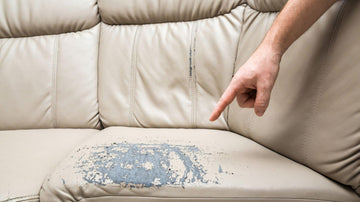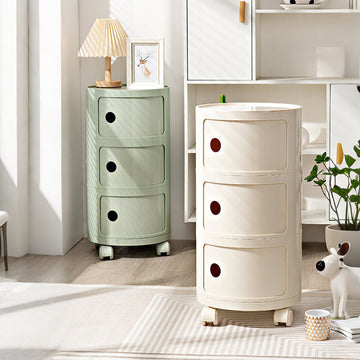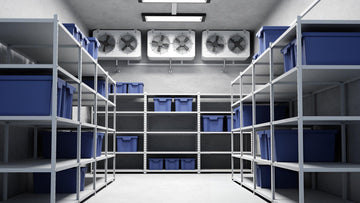Table of Contents
- What I Wish I’d Known Before Buying My Sofa
- Daily Habits That Quietly Extend a Sofa’s Life
- Where You Put It Matters More Than You Think
- Maintenance That Doesn’t Feel Like a Chore
- Fix It or Ditch It? Knowing When to Ask for Help
- Real Costs: Is Maintenance Worth the Effort?
- The Quiet Sustainability of Keeping What Works
- Final Thoughts: The Sofa That Stays
I never thought I’d care this much about a sofa. It was just supposed to be… well, a place to sit. Maybe nap. But somewhere between choosing one and actually living with it, I realized: this thing’s going to be in my life for a while.
I’d tested the cushions, checked the frame, picked a fabric that felt right—but I hadn’t really thought about what would happen after the first year. Or year five. Or what it would take to keep it looking (and feeling) decent through all of life’s messes.
One day I was wiping something sticky off the armrest for the third time that week, and it hit me: maybe the reason some sofas last longer isn’t just the brand or the build. Maybe it’s the people sitting on them—and how they treat them.
So I started paying attention. Not just to the spills, but to the things I’d never considered. Where the sun hits in the afternoon. Whether the cushions needed flipping. When the leather felt a little drier than usual.
That’s where this guide comes from. I’m not an expert—but I’ve made my share of mistakes. And if you’re hoping your sofa sticks around a little longer than average, maybe something in here will help.

What I Wish I’d Known Before Buying My Sofa
Frame First, Always
If I could go back, I’d ask more questions about what’s under the cushions. The frame is the foundation—if that goes, everything else follows.
A salesperson once told me, “Tap the base—if it sounds hollow, it probably is.” I didn’t listen. That sofa lasted three years before the left side sagged like a hammock. Now I give it the knuckle test and lift a corner. If it’s heavy and solid, it’s a maybe. If it wobbles? Walk away.
Cushion Clues
Cushions that look plush but flatten in minutes are a trap. I’ve learned to press down and wait. If it springs back slowly, that’s usually better. And anything where you can feel the frame through the seat? Hard pass.
Fabric Isn’t Just About Looks
I used to pick fabric based on color. Now, I run my fingers across it and pull gently at the edges. If it feels rough, or thin, or like it’ll snag on a ring, I move on. Look for something tightly woven, and if you have pets or kids, darker colors help hide little accidents.
Bonus Features That Matter Later
Removable cushion covers? Lifesaver. Reclining seats? Great, but only if the mechanics are smooth. I once bought a modular sofa thinking I’d rearrange it often. I never did—but being able to detach and deep clean one section at a time has been a game changer.

Daily Habits That Quietly Extend a Sofa’s Life
Clean Like You Don’t Care About Dust
I didn’t used to vacuum my sofa. Now I do, about once a week. It’s not about visible dirt—it’s the stuff you don’t see: crumbs, fibers, pet hair. They wear down the fabric faster than you’d expect.
Wipe, Don’t Rub
One time I spilled tea and panicked, scrubbing the armrest like I was trying to clean a stove. Big mistake. It left a faded patch that never matched again. Blot, always. And cold water is your friend.
Leather Needs Lotion Too
I used to think leather was low-maintenance. Then it started cracking. Turns out, it needs conditioning every few months. I use a soft cloth and a mild cream, nothing fancy. The SSL Barcelona Leather Recliner, for example, is made with full-grain leather—it ages beautifully, but only if you treat it kindly.
Keep Kids and Pets in Mind
I have a throw blanket that lives over the middle cushion. It’s not for decoration—it’s a shield. My niece eats snacks there, and my cat believes that spot belongs to her. It’s easier to wash the throw than to scrub cheese dust out of upholstery.
Where You Put It Matters More Than You Think
Sunlight Is Not Your Sofa’s Friend
I once had a sofa next to a bright window. Within six months, one armrest was noticeably lighter than the other. Since then, I either shift the layout every season or use lightweight curtains to cut the harshest light.
Avoid the Heat Trap
A friend of mine placed her leather sofa too close to a wall heater. It dried out and cracked on the back—literally the part no one ever touches. Lesson: give it space to breathe. At least half a foot from any heat source.
Dampness Adds Up
If you live somewhere humid, check behind your sofa every now and then. I found mold once—just a little—but it spooked me enough to start leaving a small gap between the wall and the back cushions.

Maintenance That Doesn’t Feel Like a Chore
Monthly Check-In
Once a month, I do a quick once-over. Are the legs loose? Are any zippers acting up? I fluff the cushions and rotate them if they’re not fixed. Takes five minutes.
Seasonal Deep Clean
Every spring and fall, I take off all the covers I can and wash them (cold water, air dry). I’ll also lift the sofa, vacuum underneath, and wipe the frame with a damp cloth. That’s when I usually find the missing remote.
Yearly Reset
Once a year, I do a full clean inside and out—and check whether anything’s wearing down: seams, springs, cushion fill. If something’s off, I try to deal with it before it becomes a bigger issue.
Fix It or Ditch It? Knowing When to Ask for Help
What I Handle Myself
- Screws coming loose? I’ve got a small wrench for that.
- Torn seams? I’ve gotten decent with a needle and thread.
- Worn cushion fill? You can buy new inserts online and swap them yourself.
When I Call Someone
If the frame creaks, or the recliner stops reclining, I don’t mess around. I call in help—especially if it’s still under warranty. Brands like SSL FURNITURE often offer repair support if your sofa is still within the covered period, which is worth checking.
Reupholster… or Replace?
I once had a sofa I loved, but the fabric was beyond saving. I got quotes for reupholstery, and they were almost as much as a new model. In the end, I replaced it. But if the frame is solid, and you love the shape, it might be worth the cost—especially for high-end pieces.
Real Costs: Is Maintenance Worth the Effort?
Let’s say your sofa cost $1,500. If it lasts 15 years, that’s $100 a year. But only if you take care of it.
I spend maybe $40–$60 a year on cleaning supplies, covers, and the occasional repair. That’s less than a dinner out—and way cheaper than a new couch.
And the longer it lasts, the more comfortable it gets. There’s something nice about a seat that knows you.
The Quiet Sustainability of Keeping What Works
We don’t talk enough about how much furniture ends up in landfills. Sofas, in particular, are big, bulky, and hard to recycle.
By making yours last longer, you’re doing more than saving money. You’re reducing waste. You’re buying less. You’re saying no to fast furniture and yes to things that stick around.
Sometimes sustainability isn’t about buying something new—it’s about keeping what you already have in good shape.
Final Thoughts: The Sofa That Stays
If there’s one thing I’ve learned, it’s that a sofa isn’t “done” once it’s in your living room. That’s just the beginning.
It’s where you’ll sit when you’re happy, tired, bored, excited. Where people will visit, spill things, curl up. It becomes part of the background of your life.
So yeah, I care about mine now. I clean it. I rotate the cushions. I don’t eat curry on it without a tray.








